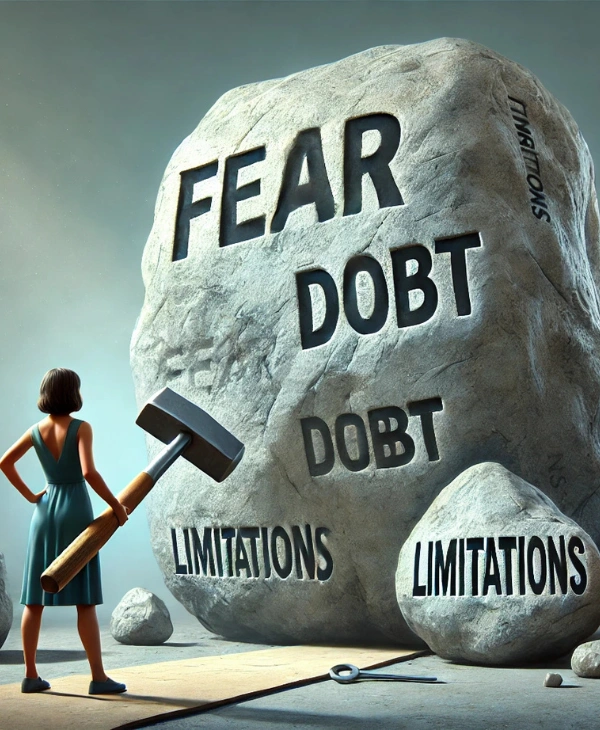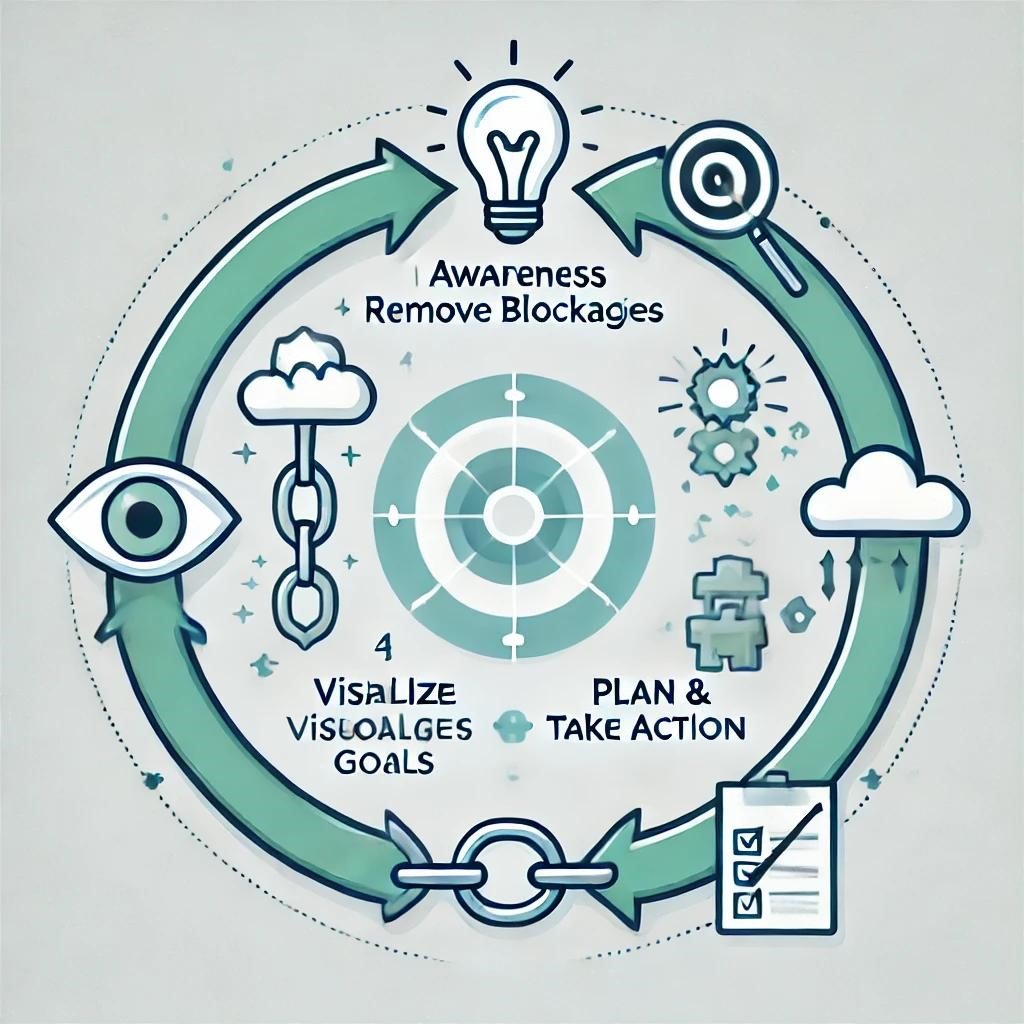Introduction to the Cycle of Becoming
The Four Stages of the Cycle of Becoming
The Cycle of Becoming consists of four essential stages: Awareness, Removing Blockages, Visualization, and Taking Action. These stages represent a journey of continuous self-growth, where each step builds on the previous one, propelling individuals toward their goals and ultimate potential. The following elaborates on each stage and highlights its significance within the transformation process.

1. Awareness: Recognizing Your Current Reality
Awareness is the foundation of any transformational process. In this stage, individuals gain a clear understanding of their current situation—personally, professionally, emotionally, and mentally. This stage draws parallels to the contemplation stage in Prochaska’s Transtheoretical Model of Change, where individuals begin to acknowledge the need for change and reflect on the areas of their life that require attention.
Awareness is not merely about acknowledging external circumstances but also about developing self-awareness—a deep understanding of one’s thoughts, emotions, and behaviors. This internal reflection often uncovers underlying motivations, values, and belief systems. In line with Daniel Goleman’s Emotional Intelligence model, self-awareness is the first key element to understanding how our emotions affect our decisions and actions.
By becoming aware, individuals develop a holistic view of their life, including their strengths, weaknesses, aspirations, and challenges. This reflective stage helps individuals identify what is working and what is holding them back, preparing them for the next step in the cycle.
2. Removing Blockages: Clearing the Path for Growth
Once awareness is achieved, individuals must confront and remove the blockages that impede their progress. These blockages can be internal, such as self-doubt, imposter syndrome, fear of failure, or deeply ingrained limiting beliefs. They can also be external, such as lack of resources, unsupportive environments, or societal barriers.
This stage mirrors Lewin’s unfreezing phase, where individuals must break away from their established patterns and habits to embrace change. Removing blockages requires conscious effort to challenge negative thought patterns and replace them with empowering beliefs. In this phase, techniques like cognitive restructuring from cognitive-behavioral therapy (CBT) are particularly helpful, allowing individuals to replace harmful thoughts with constructive ones.
Additionally, external blockages may involve seeking new opportunities, changing environments, or building support systems that encourage growth. The removal of these blockages is essential for setting the stage for the next phase, where individuals begin to visualize new possibilities for themselves.


3. Visualization: Creating a Clear Picture of Success
Visualization is a powerful tool in personal and professional development. During this stage, individuals actively envision their future, aligning their goals with their personal values and aspirations. Visualization connects deeply with Maslow’s concept of self-actualization, where individuals strive to achieve their highest potential.
This stage also aligns with the preparation and commitment phases of Prochaska’s model. It involves setting goals that are deeply meaningful and developing a mental image of success. Research in psychology shows that visualization techniques, such as mental imagery and vision boards, can have a profound impact on motivation and goal achievement. By creating a vivid picture of what success looks like, individuals reinforce their commitment to achieving their dreams.
Visualization also helps individuals define SMART goals—goals that are Specific, Measurable, Achievable, Relevant, and Time-bound. This approach ensures that their ambitions are grounded in reality while still being aspirational. Positive affirmations can further enhance this stage, reinforcing the vision with empowering thoughts.
4. Taking Action: Turning Vision into Reality
The final stage of the Cycle of Becoming is where transformation truly takes place. It involves translating awareness, clarity, and visualization into strategic action. This stage aligns with Lewin’s refreezing phase, where new behaviors are solidified, and change becomes sustainable.
In this stage, individuals implement action plans that break down their goals into manageable steps. This mirrors the action and maintenance stages of Prochaska’s model, where individuals begin to implement new behaviors and make continuous efforts to maintain their progress.
Taking action also requires time management and accountability. Creating a roadmap to success, which includes milestones, deadlines, and regular self-reflection, helps individuals stay on track. Additionally, surrounding oneself with supportive individuals who hold them accountable can make a significant difference in staying motivated and persistent.
However, the journey does not end with taking action. This stage also requires resilience and adaptability, as challenges and setbacks are inevitable. Individuals must learn to embrace failure as part of the process and adjust their plans when necessary. Staying motivated, overcoming procrastination, and celebrating small wins are all vital components of this stage.


Conclusion & Summary
The Cycle of Becoming is a transformative journey that begins with a deep look into where you stand in life and career, building awareness of your strengths and challenges. As you move forward, you start removing blockages—those inner doubts and outer obstacles that may hold you back. With a clear mind, you then paint a vivid picture of your dreams and goals, using visualization to bring them to life and align them with your deepest values. Finally, you set out on a path of purposeful action, crafting a plan, managing your time, and celebrating each milestone, adapting along the way. This cycle empowers you to overcome life’s hurdles, continuously grow, and ultimately create the life you envision.
